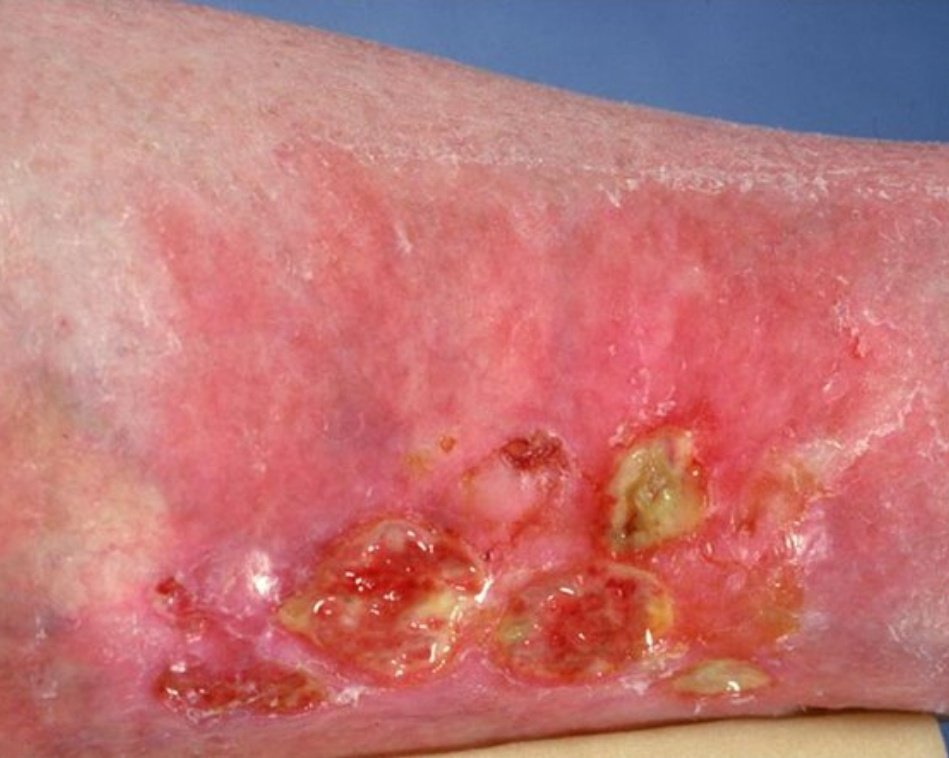
Mucormycosis:
1. Fatal invasive disease with high mortality
2. Genus: rhizopus, mucor, cunninghamella, lichtheimia etc
3. Risk factors: Uncontrolled DM, DKA, neutropenia, prolonged glucocorticoid use, elevated levels of free iron, SOT, HSCT, COVID-19 infection.
1. Fatal invasive disease with high mortality
2. Genus: rhizopus, mucor, cunninghamella, lichtheimia etc
3. Risk factors: Uncontrolled DM, DKA, neutropenia, prolonged glucocorticoid use, elevated levels of free iron, SOT, HSCT, COVID-19 infection.
4. Rhino-orbital-cerebral disease: most common form, seen in diabetes, steroid use. Ethmoid sinus-->orbit-->frontal lobe/cavernous sinus, hard palate in advanced case.
5. Pulmonary disease: second most common, in organ transplant, chemotherapy receiving pt.
5. Pulmonary disease: second most common, in organ transplant, chemotherapy receiving pt.
6. Cutaneous: hematogenous dissemination or direct inoculation. Can be highly invasive. Needs prompt debridement.
7. GIT: GI bleeding, fungating mass seen at UGIE, perforation, high mortality.
8. Disseminated disease: most common site is brain. Mortality >90%.
7. GIT: GI bleeding, fungating mass seen at UGIE, perforation, high mortality.
8. Disseminated disease: most common site is brain. Mortality >90%.
9. Dx: Bx with HPE is the most sensitive method. Broad aseptate hyphae with right angle branching is seen. Yield from culture is low.
10. CT shows sinusitis,MRI is more sensitive for orbital & CNS ds
11. Early initiation of liposomal Ampho-B (5-10 mg/kg) improves survival.
10. CT shows sinusitis,MRI is more sensitive for orbital & CNS ds
11. Early initiation of liposomal Ampho-B (5-10 mg/kg) improves survival.
12. Surgical debridement is important for eradication.
13. Reversing predisposing conditions, treating underlying malignancy.
14. Posaconazole & isavuconazole are used for step-down & salvage therapy.
#IDTwitter
#MedTwitter
#medicine
#mycology
13. Reversing predisposing conditions, treating underlying malignancy.
14. Posaconazole & isavuconazole are used for step-down & salvage therapy.
#IDTwitter
#MedTwitter
#medicine
#mycology
@RajaNatarajanS1
@anand_dr87
@DrShubhamMishr2
@LovelinJason
@Sreenath_Sree
@ShreerajT
@aekdkk
@DoctorBhavsar
@yajadev
@DrNikhilvasudev
@anand_dr87
@DrShubhamMishr2
@LovelinJason
@Sreenath_Sree
@ShreerajT
@aekdkk
@DoctorBhavsar
@yajadev
@DrNikhilvasudev
• • •
Missing some Tweet in this thread? You can try to
force a refresh





